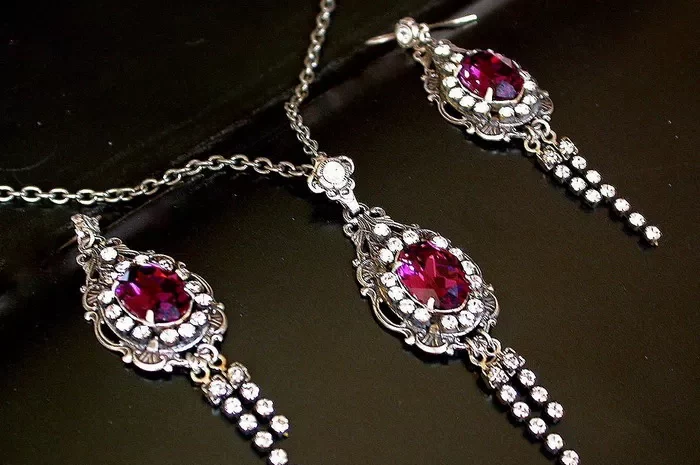Burmese rubies, renowned for their exceptional color, clarity, and rarity, are among the most coveted gemstones in the world. Originating from the mines of Myanmar (formerly known as Burma), these exquisite rubies have captured the hearts of gemstone enthusiasts and collectors for centuries. In this article, we’ll delve into the factors that determine the value of Burmese rubies and explore why they command premium prices in the gemstone market.
Introduction to Burmese Rubies
Burmese rubies have a long and illustrious history, dating back to ancient times when they were treasured by royalty and nobility for their mesmerizing beauty. The distinctive “pigeon’s blood” red color, characterized by a rich, pure red hue with a hint of blue, is the hallmark of Burmese rubies and sets them apart from rubies of other origins.
The geological conditions in Myanmar, particularly in the Mogok region, are ideal for the formation of high-quality rubies. The presence of chromium within the corundum crystal lattice is responsible for the vivid red color of Burmese rubies, while the presence of trace elements such as iron and titanium can affect their color intensity and saturation.
Factors Affecting the Value of Burmese Rubies
Several factors contribute to the value of Burmese rubies, including the following:
Color: The color of a Burmese ruby is the most critical factor in determining its value. The most desirable rubies exhibit a vivid, pure red color known as “pigeon’s blood,” which is highly coveted for its exceptional beauty and rarity. Rubies with a strong red hue and minimal secondary tones such as orange, pink, or purple command premium prices in the market.
Clarity: Clarity refers to the presence of internal characteristics, known as inclusions, within the ruby. While some inclusions are acceptable and may even be expected in natural gemstones, high-quality Burmese rubies exhibit excellent clarity and transparency, with minimal visible inclusions. Eye-clean rubies with few or no visible inclusions are more valuable than heavily included specimens.
Cut: The cut of a Burmese ruby can greatly impact its beauty, brilliance, and overall value. Well-cut rubies exhibit optimal proportions, symmetry, and polish, enhancing their sparkle and light performance. Popular cuts for Burmese rubies include oval, cushion, and round cuts, although other fancy shapes such as pear or emerald cuts may also be available. A high-quality cut can maximize the ruby’s color, minimize any potential color zoning or extinction, and create an attractive play of light within the gemstone.
Carat Weight: As with other gemstones, the size of a Burmese ruby can significantly affect its price. Larger rubies are rarer and thus more valuable than smaller stones. However, the price per carat tends to increase exponentially as the carat weight of the ruby increases, meaning that larger stones can be significantly more expensive on a per-carat basis.
Origin: The geographic origin of a ruby can also influence its value and desirability. Burmese rubies, particularly those from the Mogok region, are highly sought after due to their exceptional color, clarity, and rarity. Rubies from other sources may also be valuable, but Burmese rubies are often considered the pinnacle of quality and beauty in the gemstone world.
How Much Is a Burmese Ruby Worth?
The price of a Burmese ruby can vary widely depending on factors such as color, clarity, carat weight, cut, and origin. In general, Burmese rubies command premium prices in the market due to their exceptional quality and rarity.
At the lower end of the price spectrum, small to medium-sized Burmese rubies with lighter or less saturated colors may be relatively affordable and accessible. These stones are often used in jewelry such as earrings, pendants, and rings, where their vibrant red hue adds a touch of elegance and sophistication.
On the other hand, larger Burmese rubies with intense, pigeon’s blood red color and excellent clarity can fetch astronomical prices in the market. These rare gemstones are highly sought after by collectors and connoisseurs and can command prices that rival or even exceed those of top-quality diamonds and sapphires.
Conclusion
In conclusion, Burmese rubies are among the most prized and valuable gemstones in the world, cherished for their exceptional color, clarity, and rarity. From their mesmerizing pigeon’s blood red hue to their unparalleled brilliance and fire, Burmese rubies continue to captivate and inspire gemstone enthusiasts and collectors around the globe. Whether you’re seeking a stunning ruby for a piece of jewelry or a rare and exceptional specimen for your collection, Burmese rubies offer a timeless beauty and allure that is truly unparalleled. With their rich history, breathtaking beauty, and enduring appeal, Burmese rubies will continue to be treasured for generations to come.


